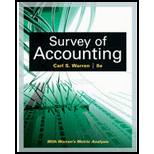
Cost-plus and target costing concepts
The following conversation took place between Dean Lancaster, vice president of marketing, and Dina Conaway, controller of Redwood Computer Company:
Dealt: I am really excited about our new computer coming out. 1 think ii will lx* a real market success.
Dina: I'm really glad you think so. I know that our success will In- determined by our price. If our price is too high, our competitors will be the ones with the market success.
Dean: Don't worry about it. We'll just mark our product cost up by 25% and it will all work out. I know we'll make money at those markups. By the way. what does the estimated product com look like?
Dina: Well, there's the rub. The product cost looks as if it's going 10 come in at around $1,000. With a 25% markup, that will give us a selling price of $1,250.
Dean: I see your concern. That's a little high. Our research indicates that computer prices are dropping and that (his type of computer should be selling for around $900 when we release it to the market.
Dina: I'm not sure what to do.
Dean: Let me see if I can help. How much of the $1,000 is fixed cost?
Dina: About $300.
Dean: There you go. The fixed cost is sunk. We don't need to consider it in our pricing decision. If we reduce the product cost by $300, the new price with a 25% markup would be right at $875. Boy, I was really worried for a minute there. 1 knew something wasn't right.
How might target costing be used to help solve this pricing dilemma?
Want to see the full answer?
Check out a sample textbook solution
Chapter 12 Solutions
Survey of Accounting - With CengageNOW 1Term
- Question: Quill Corp. shows the following information on its 2007 income statement: Sales Costs Other expenses $145,000 $86,000 $4,900 Depreciation expense $7,000 Interest expense Taxes Dividends $25,720 $12,840 $8,700 In addition, you're told that the firm issued $6,450 in new equity during 2007 and redeemed $8,770 in outstanding long-term debt. What is the 2007 cash flow to creditors?arrow_forwardSwansea Finishing produces and sells a decorative pillow for $103.00 per unit. In the first month of operation, 2,300 units were produced and 1,800 units were sold. Actual fixed costs are the same as the amount budgeted for the month. Other information for thee month includes: Variable manufacturing costs Variable marketing costs $23.00 per unit $8.00 per unit $14 per unit Fixed manufacturing costs Administrative expenses, all fixed Ending inventories: $20.00 per unit Direct materials WIP -0- -0- 500 units Finished goods What is cost of goods sold per unit using variable costing? a. $31.00 b. $45.00 c. $23.00 d. $65.00arrow_forwardI want accurate answer ☑arrow_forward
- Choose the correct optionarrow_forwardThe concept that states assets should be recorded at their original cost is known as the: i. Matching Principle ii. Consistency Principle iii. Cost Principle iv. Revenue Recognition Principlearrow_forwardNeed help with this accounting problem with correct calculationarrow_forward
 Managerial AccountingAccountingISBN:9781337912020Author:Carl Warren, Ph.d. Cma William B. TaylerPublisher:South-Western College Pub
Managerial AccountingAccountingISBN:9781337912020Author:Carl Warren, Ph.d. Cma William B. TaylerPublisher:South-Western College Pub Managerial Accounting: The Cornerstone of Busines...AccountingISBN:9781337115773Author:Maryanne M. Mowen, Don R. Hansen, Dan L. HeitgerPublisher:Cengage Learning
Managerial Accounting: The Cornerstone of Busines...AccountingISBN:9781337115773Author:Maryanne M. Mowen, Don R. Hansen, Dan L. HeitgerPublisher:Cengage Learning Cornerstones of Cost Management (Cornerstones Ser...AccountingISBN:9781305970663Author:Don R. Hansen, Maryanne M. MowenPublisher:Cengage Learning
Cornerstones of Cost Management (Cornerstones Ser...AccountingISBN:9781305970663Author:Don R. Hansen, Maryanne M. MowenPublisher:Cengage Learning


